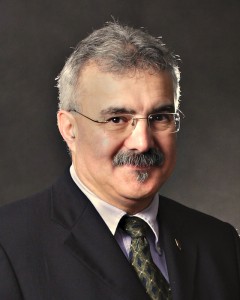By Michael A.G. Haykin
Andrew Atherstone, Archbishop Justin Welby: The Road to Canterbury (London: Darton, Longman and Todd, 2014), viii+152 pages.
 What drew me to this unauthorized biography of Justin Welby, the 105th Archbishop of Canterbury, was frankly the author, Andrew Atherstone, currently Tutor in History and Doctrine at Wycliffe Hall, Oxford. Having profited greatly from books that he was written in the past, I looked forward to the same in this sympathetic biography.
What drew me to this unauthorized biography of Justin Welby, the 105th Archbishop of Canterbury, was frankly the author, Andrew Atherstone, currently Tutor in History and Doctrine at Wycliffe Hall, Oxford. Having profited greatly from books that he was written in the past, I looked forward to the same in this sympathetic biography.
Welby was born into wealth and was very successful in the world of finance—he was a treasurer in the oil industry and had a salary of £100,000 per annum in 1989; but the compulsion of the Spirit and constraints of the gospel led him to train for vocational ministry at Cranmer Hall in Durham. During the early days of his Christian life after a distinctly evangelical conversion he was deeply shaped by the Vineyard as it found expression in the ministry of Holy Trinity Brompton.
His first ministerial charge was at Chilvers Coton in the diocese of Coventry. This diocesan locale proved to be important for Welby’s long-term career. The destruction of Coventry and St. Michael’s Cathedral in 1940 during World War II had led to the formation of the Community of the Cross of Nails (so named because of three medieval nails from the destroyed cathedral that were fused into a cross after the bombing), which came to focus on reconciliation projects in trouble spots around the world. In time, reconciliation became a defining hallmark of Welby’s ministry.
From Chilvers Coton, Welby went to Southam, Warwickshire, as the rector of Sr. James, where he became increasingly concerned for parish renewal, the relationship between theology and ethics, and the ministry of reconciliation. The latter frequently took him to Africa, where he faced mortal danger more than once, especially in Nigeria where violent clashes between Muslim and Christian were becoming more and more frequent in the 2000s.
Welby has insisted that he is “an orthodox Bible-believing evangelical,” for whom Scripture is “my final authority for all matters of life and doctrine” (p.90). But his concern for reconciliation has also led him to seek to preserve the unity of the Anglican communion despite recent deep divisions over women’s ordination and the question of same-sex marriage. There is no doubt that the latter issue will definitely test his abilities as Archbishop, for, in the final analysis, same-sex marriage is incompatible with a high view of Scripture.
Three things in particular struck me in Atherstone’s story of Welby’s life thus far: Welby’s concern for unity; in his own words, it is an “absolute essential” (p.113). Sadly, because unity has all too often in the past century been the concern of ecumenical types with a low of scriptural authority, evangelicals have not paid the matter the attention it deserves. But such an attitude is out of sync with both Scripture and the tradition of evangelicalism. The critical question, of course, has to do with the dynamics of making it happen. Then, there is Welby’s early experience with the charismatic movement and Third Wave theology that seems to have given him a life-long desire for revival, which, he would argue, is rooted in the resurrection: “Our hope of revival is based on the resurrection. Again and again in church history churches far worse off than us have, with clear leadership, found new life, and finding it have seen astonishing growth. Personally I believe passionately that it is possible” (p.131). To be honest, I did not expect the Archbishop of Canterbury to speak in such terms. Yet, his words are welcome and wise.
Third, it is clear that while Welby’s roots are evangelical, he has moved beyond the boundaries of evangelicalism in his practice of the Christian life. For instance, Atherstone notes Welby’s deep indebtedness to both Benedictine and Ignatian spirituality (p.94–97, 143). Reading this, it struck me that Welby typifies so many other evangelicals who have turned to other traditions of piety to enrich their faith. To be sure, it is not the case that we evangelicals have nothing to learn from these traditions. But the questions lay burning in my heart long after I had finished reading this biography: do we not have a tradition of piety that can nurture the deepest recesses of the believer’s heart (forsooth we do) and why is it not being retrieved and taught?
Michael A.G. Haykin
Professor of Church History
The Southern Baptist Theological Seminary
To download the review as PDF, click here. To see other book reviews, visit here.
 care and passion. After serving several years as professor of church history at Southeastern Baptist Theological Seminary in North Carolina, Finn was recently elected dean of the School of Theology and Missions at Union University in Tennessee.
care and passion. After serving several years as professor of church history at Southeastern Baptist Theological Seminary in North Carolina, Finn was recently elected dean of the School of Theology and Missions at Union University in Tennessee.





 Michael A.G. Haykin is the director of the Andrew Fuller Center for Baptist Studies. He also serves as Professor of Church History and Biblical Spirituality at Southern Baptist Theological Seminary. Dr. Haykin and his wife Alison have two grown children, Victoria and Nigel.
Michael A.G. Haykin is the director of the Andrew Fuller Center for Baptist Studies. He also serves as Professor of Church History and Biblical Spirituality at Southern Baptist Theological Seminary. Dr. Haykin and his wife Alison have two grown children, Victoria and Nigel.




 On February 6, 2015, The Andrew Fuller Center for Baptist Studies hosted a mini-conference to consider the legacy of Andrew Fuller. 2015 marks the bicentennial of Fuller's death so it was appropriate The Andrew Fuller Center devote some time to assessing his legacy. As an added bonus, the conference date of February 6th was the 261st birthday of Fuller. The conference was hosted on the third floor of the Legacy Hotel on the campus of The Southern Baptist Theological Seminary in Louisville, Kentucky. We are pleased to make available the audio from the conference free of charge below.
On February 6, 2015, The Andrew Fuller Center for Baptist Studies hosted a mini-conference to consider the legacy of Andrew Fuller. 2015 marks the bicentennial of Fuller's death so it was appropriate The Andrew Fuller Center devote some time to assessing his legacy. As an added bonus, the conference date of February 6th was the 261st birthday of Fuller. The conference was hosted on the third floor of the Legacy Hotel on the campus of The Southern Baptist Theological Seminary in Louisville, Kentucky. We are pleased to make available the audio from the conference free of charge below.


 Michael A.G. Haykin is the director of the Andrew Fuller Center for Baptist Studies. He also serves as Professor of Church History and Biblical Spirituality at Southern Baptist Theological Seminary. Dr. Haykin and his wife Alison have two grown children, Victoria and Nigel.
Michael A.G. Haykin is the director of the Andrew Fuller Center for Baptist Studies. He also serves as Professor of Church History and Biblical Spirituality at Southern Baptist Theological Seminary. Dr. Haykin and his wife Alison have two grown children, Victoria and Nigel. Nathan A. Finn is associate professor of historical theology and Baptist Studies at Southeastern Baptist Theological Seminary. He is also an elder at First Baptist Church of Durham, NC and a fellow of the Andrew Fuller Center for Baptist Studies.
Nathan A. Finn is associate professor of historical theology and Baptist Studies at Southeastern Baptist Theological Seminary. He is also an elder at First Baptist Church of Durham, NC and a fellow of the Andrew Fuller Center for Baptist Studies.
 Ian Hugh Clary is finishing doctoral studies under Adriaan Neele at Universiteit van die Vrystaat (Blomfontein), where he is writing a dissertation on the evangelical historiography of Arnold Dallimore. He has co-authored two local church histories with Michael Haykin and contributed articles to numerous scholarly journals. Ian lives in Toronto with his wife and two children.
Ian Hugh Clary is finishing doctoral studies under Adriaan Neele at Universiteit van die Vrystaat (Blomfontein), where he is writing a dissertation on the evangelical historiography of Arnold Dallimore. He has co-authored two local church histories with Michael Haykin and contributed articles to numerous scholarly journals. Ian lives in Toronto with his wife and two children.